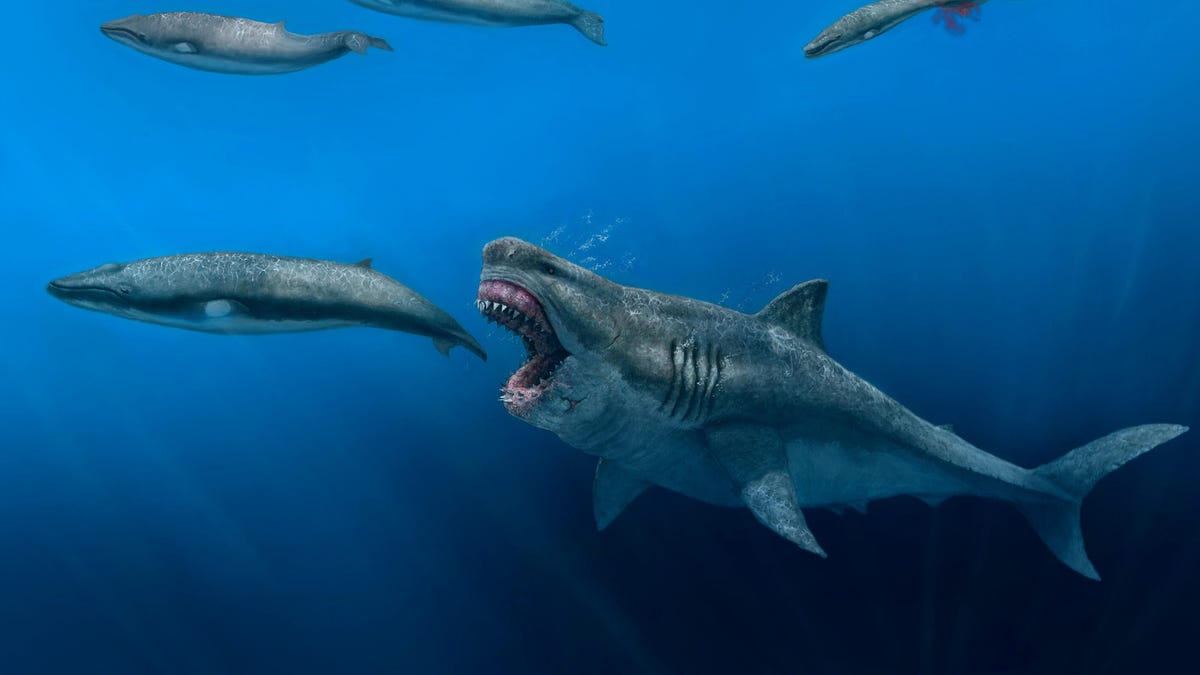Extinct Megalodon Sharks Gorged on Prey the Size of Killer Whales
Big sharks, big appetites.
Megalodon. A jumbo apex predator. The biggest shark that ever lived. It might be long extinct, but scientists (and Hollywood) are fascinated by the absolute unit. A new study done in collaboration with University of Zurich researchers suggests megalodon "could fully consume prey the size of today's killer whales."
The research team came to that conclusion after building a 3D model of megalodon that showed one specimen reached 52 feet (16 meters) in length and weighed over 61 tons. The model also estimated its stomach volume (massive) and its caloric requirements (also massive). "These results suggest that the megalodon could travel long distances and was capable of eating whole prey of up to 8 meters long," the university said in a statement Wednesday.
An explanatory video covers how scientists worked out this new information on megalodon.
Megalodon is a mysterious animal thanks to the sketchy fossil record. Teeth have remained behind, but the cartilage-based skeletons broke down and disappeared. A study from early 2022 highlighted how little we know about what the giants might've really looked like. Most illustrations we see tend to go for the jumbo-great-white-shark look.
To build a 3D model, the researchers looked to a rare find: part of a vertebral column of a megalodon fossil found in the 1860s. The animal had lived in the region of Belgium and died about 18 million years ago. Jack Cooper, a doctoral student at Swansea University and lead author of the study published in Science Advances, called the fossil "one of a kind."
The team combined scans and measurements of the 141 vertebrae with data on megalodon teeth. The skull and flesh of the body was modeled after a great white shark. "Weight is one of the most important traits of any animal. For extinct animals we can estimate the body mass with modern 3D digital modelling methods and then establish the relationship between mass and other biological properties such as speed and energy usage," said co-author John Hutchinson of the Royal Veterinary College in the UK.
Megalodon was already known to have snacked on whales, a good source of calories thanks to the blubber. The researchers say the shark could've eaten a killer-whale-size meal and then coasted on the feast for two months without having to eat again.
The study highlights how the shark was a beast, a "transoceanic superpredator." It would have made Jaws look like a guppy.


